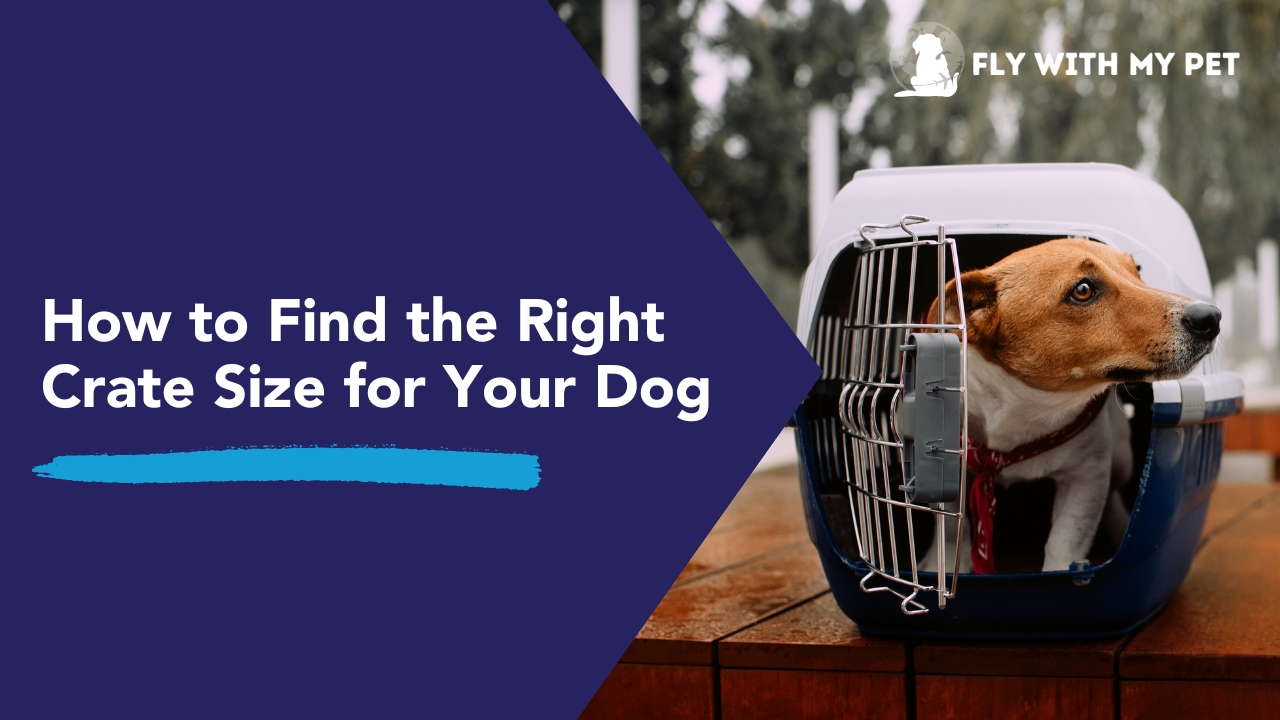
If you’re planning to travel with your dog, choosing the right crate is one of the most important steps for a smooth and stress-free journey. Whether flying internationally or taking a short domestic trip, ensuring that your dog’s crate meets airline regulations while keeping them safe and comfortable is essential.
In this guide, we’ll break down everything you need to know about dog crate sizes, how to measure your pet correctly, and what to consider when selecting the perfect travel crate.
Why Choosing the Right Crate Size is Important
A well-fitted crate provides security and comfort for your dog while also complying with airline requirements. If the crate is too small, your dog may feel cramped and anxious. If it’s too large, they may slide around during transit, increasing the risk of injury.
A properly sized crate should allow your dog to:
- Stand up without hitting their head on the top.
- Turn around comfortably.
- Lie down and stretch out naturally.
How to Measure Your Dog for the Right Crate Size
To determine the best dog crate size, follow these simple steps:
- Measure Your Dog’s Length
- Measure from the tip of the nose to the base of the tail (not the full tail length).
- Add 2 to 4 inches for a comfortable fit.
- Measure Your Dog’s Height
- Measure from the floor to the top of their head (or ears if they stand upright).
- Add 2 to 4 inches to ensure enough headroom.
- Measure Your Dog’s Width
- Ensure the crate is wide enough for your dog to turn around comfortably.
Choosing the Right Crate Type for Travel
Once you have your dog’s measurements, it’s time to select a crate. Here are the most common types used for pet travel:
1. Hard-Sided Plastic Travel Crates (Airline Approved)
- Sturdy and secure for air travel.
- Provides ventilation and a leak-proof bottom.
- Must meet International Air Transport Association (IATA) guidelines for airline travel.
2. Soft-Sided Crates (For In-Cabin Travel)
- Ideal for small dogs traveling in-cabin.
- Flexible and easy to carry but may not be accepted for larger pets traveling in cargo.
For detailed guidance on selecting the perfect pet crate, along with expert recommendations, check out our Ultimate Guide to Pet Carriers for Dogs.
Understanding Airline Requirements for Dog Crates
Most airlines follow IATA pet travel regulations, which require:
- The crate must be large enough for your dog to stand, turn, and lie down.
- The crate must have ventilation on all four sides for proper airflow.
- The crate must have a leak-proof bottom (use absorbent bedding for comfort).
- The crate must have a secure, spring-loaded door latch to prevent escape.
- The crate must have “Live Animal” stickers and contact information attached.
Different airlines have specific size and material requirements, so always check with your airline in advance.
Final Tips for a Stress-Free Journey
- Choose a crate well in advance so your dog has time to get comfortable with it before travel day.
- Add comfort items like a soft blanket or a favorite toy (if allowed by the airline).
- Label your crate with your contact information and any necessary travel documents.
- Book a pet-friendly flight to ensure a smoother travel experience.
For more guidance on pet-friendly flights and airline policies, check out our post on Everything You Need to Know About Traveling with Pets on Major Airlines.
Find the Perfect Crate for Your Pet’s Next Adventure
Selecting the right dog crate size is essential for your pet’s safety, comfort, and compliance with airline policies. By following these measurement tips and choosing an airline-approved crate, you’ll be well-prepared for a smooth and stress-free journey with your dog.
Need more pet travel resources? Visit our Pet Travel Resource Hub for expert tips, airline policies, and travel checklists!
